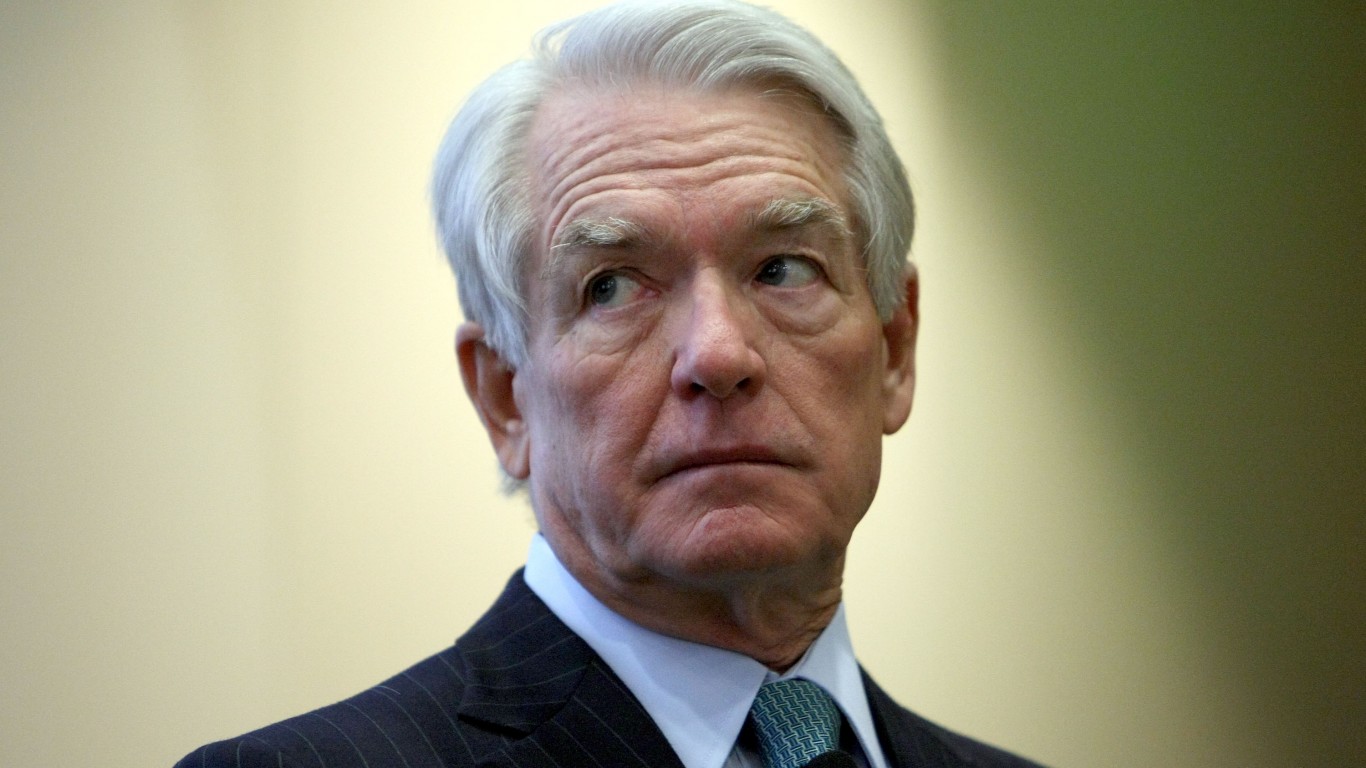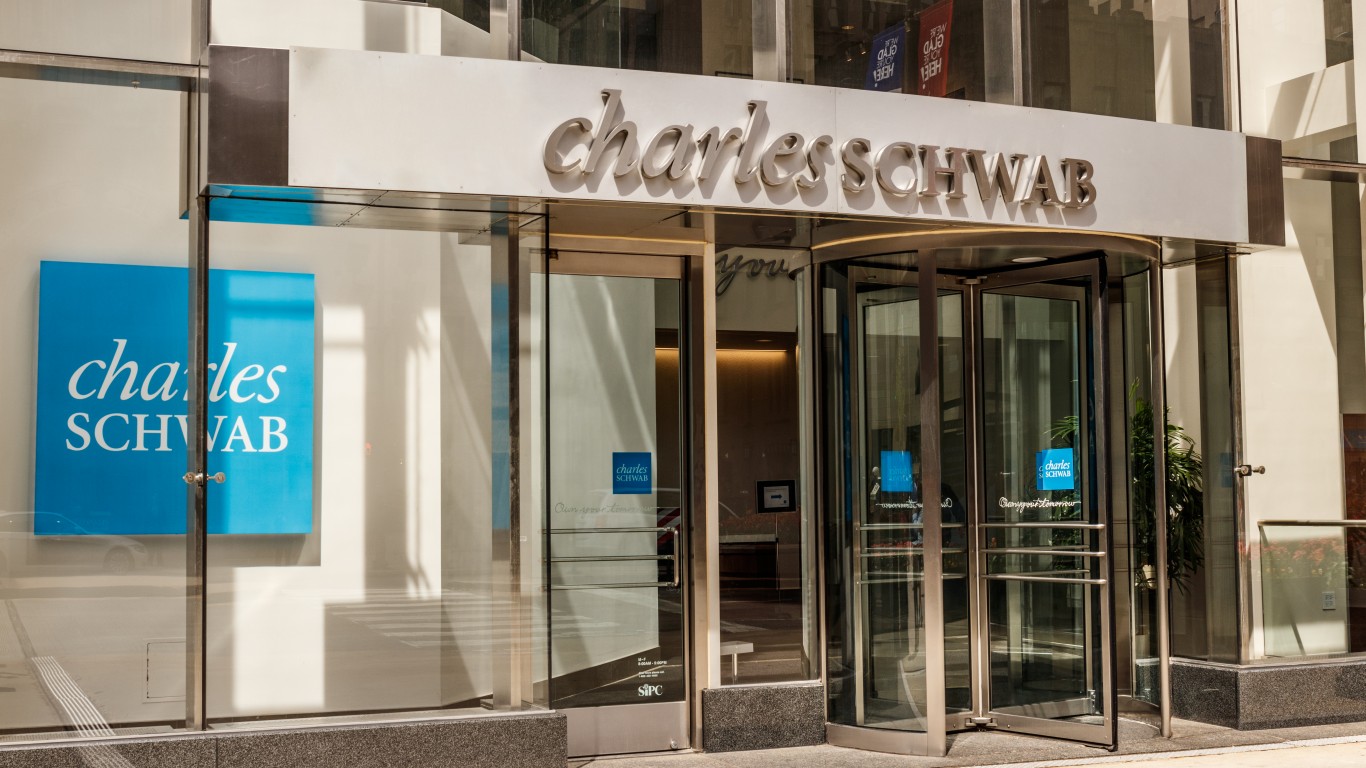
Charles Schwab is the chairman, director and founder of the financial services firm by the same name, often referred to as “Schwab” for short.
Charles Robert Schwab Sr. launched his firm in 1971 as a discount brokerage with a mission to help ordinary people jump into the world of investing when leading brokerages mainly catered to institutional investors and high-net worth individuals.
One milestone in achieving this goal occurred in the mid-’70s, when Schwab took advantage of an SEC deregulation of brokerage commissions and began began lowering its own commissions on trades.
Fast forward to 2019, Schwab became one of the first firms to pave the way for commission-free stock trading as an industry norm. But cutting back on fees didn’t slow Schwab down. Today, Schwab manages about $8.88 trillion in client assets and oversees more than 35 million accounts throughout the globe.
But who exactly is the man behind the country’s largest publicly-traded investment services firm?
Charles Schwab’s early days

Charles Schwab was born on July 29, 1937 in Sacramento, California to a lawyer and a district attorney. With an entrepreneurial vision, he went on to Stanford University, where he earned a bachelor’s degree in economics and a master’s degree in business administration.
While pursuing his graduate degree, Charles “Chuck” R. Schwab landed a job with a local investment firm and quickly rose to vice president of the company. But a young Charles decided to move forward on his entrepreneurial path and started Investment Indicator, an investment advisory newsletter with two friends in 1962.
Peaking at 3,000 subscribers paying nearly $90 a month for their service, the firm saw success throughout the early ‘60s – until the 1969 stock market crash. Then, Chuck found himself in a lawsuit against the state of Texas, which ordered him to cease taking mail orders from Texans on account of not being registered to do business in the state.
After the smoke cleared, Charles was left with $100,000 in debt. But after securing a land deal with an uncle, the relative agreed to pay it off. The uncle even offered Schwab an extra $100,000 to launch his own business. From there, Chuck planted the seeds of Schwab.
The Charles Schwab Corporation: A Retrospect

In 1971, Charles Schwab earned incorporation in California as a broker-dealer securities business with rights to publish the Schwab Investment Indicator newsletter.
Schwab raced forward in the 1970s, reaching several accomplishments. It opened its first branches in Sacramento and Seattle. Schwab also became the first firm in the industry to extend service hours for customer service and quotes from 5:30 a.m. to 9:00 a.m. PT.
In the 1980s, Schwab joined the New York Stock Exchange (NYSE) and opened its first branch in Manhattan. The firm also launched the Mutual Fund MarketPlace with more than 140 no-load mutual funds.
In the ‘90s, it established the Charles Schwab Trust Company, which provided no-fee individual retirement accounts (IRA). Today, the company also offers the Schwab Roth IRA, which can provide eligible tax-free withdrawals in retirement. Schwab also linked deeper into the digital age by launching Schwab.com. It then kicked-off its first online mutual fund screener.
In the 2000’s, Schwab opened Charles Schwab Bank, offering a variety of deposit and lending products. Today, the firm offers access to credit-rewards programs like the Schwab Investor Account. And its deposit accounts are FDIC insured up to the legal limits.
Schwab also remained on a tech-first path by launching a robo-advisor service in 2015. You can check out if automated investing is right for you through Schwab Intelligent Portfolios.
In 2020, Schwab joined forces with TD Ameritrade. This gave Schwab clients access to services like the award-winning thinkorswim, an advanced trading and research platform.
The future of Charles Schwab

Mr. Schwab remains co-chair of The Charles Schwab Corporation with Chief Executive Officer Walter W. Bettinger II.
And while his firm has seen several accomplishments since its inception in the 1970s, Mr. Schwab has reached milestones outside the boardroom.
He’s written several books including “How to Be Your Own Stockbroker,” “Charles Schwab’s Guide to Financial Independence” and “You’re Fifty—Now What?”
He also collaborated with his daughter Carrie Schwab-Pomerantz on “It Pays To Talk.” Mr. Schwab wrote his latest title, “Invested: Changing Forever the Way Americans Invest” in 2019 with Ghassan Zeineddine.
But Chuck is also known for his philanthropic work. With his wife Helen, he co-founded The Charles and Helen Schwab Foundation, which supports entrepreneurial organizations serving in the education, poverty prevention, health and human services sectors.
In 2008, President George W. Bush named Schwab chairman of the President’s Advisory Council on Financial Literacy. This organization was in direct contact with the president and Secretary of the Treasury to provide guidance on enhancing the financial education of Americans.
Schwab in the modern age

Today, Schwab offers a variety of accounts and products to help anyone from beginners to institutional clients invest and meet their financial milestones. These may include planning for retirement and saving for a child’s college education.
See if the Schwab 529 college savings plan is right for you. And if you’d like personalized and comprehensive guidance on every aspect of your financial life, explore Schwab Advisor Services.
And if you’d like to open a brokerage account for a minor, you can review the benefits of a Schwab custodial account.
If you’re curious about any other part of Charles Schwab, check out this page: a regularly updated list of all our Charles Schwab news coverage, and lists of benefits.
It’s Your Money, Your Future—Own It (sponsor)
Retirement can be daunting, but it doesn’t need to be.
Imagine having an expert in your corner to help you with your financial goals. Someone to help you determine if you’re ahead, behind, or right on track. With SmartAsset, that’s not just a dream—it’s reality. This free tool connects you with pre-screened financial advisors who work in your best interests. It’s quick, it’s easy, so take the leap today and start planning smarter!
Don’t waste another minute; get started right here and help your retirement dreams become a retirement reality.
Thank you for reading! Have some feedback for us?
Contact the 24/7 Wall St. editorial team.





